#saskia with a flower by rembrandt
Text
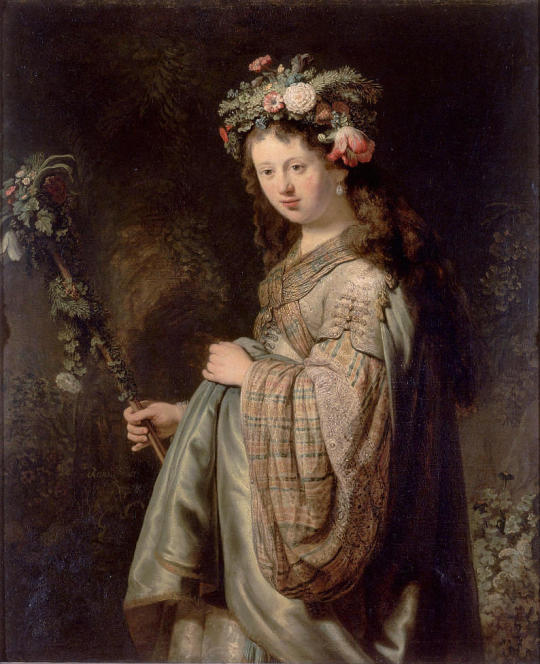
MWW Artwork of the Day (1/1/24)
Rembrandt van Rijn (Dutch, 1606-1669)
Saskia as Flora (1634)
Oil on canvas, 125 x 101 cm.
The Hermitage Museum, St. Petersburg
Rembrandt's brand-new bride, Saskia van Uylenburgh, was probably the model for Flora, the Roman goddess of flowers, springtime and fertility, here crowned with flowers and dressed in a costly gown. On July 22, 1634 Rembrandt married Saskia, and in the same year he painted his Flora. He portrayed a modest, charming Flora, dressed in a rather oriental costume. Her floral finery includes a red tulip, in those days a flower both costly and popular. Flowers also entwine the stick in her hand. The foliage in the background indicates the outdoor setting.
20 notes
·
View notes
Text
Rembrandt van Rijn • 1606–1669 • Dutch • Baroque, Dutch Golden Age
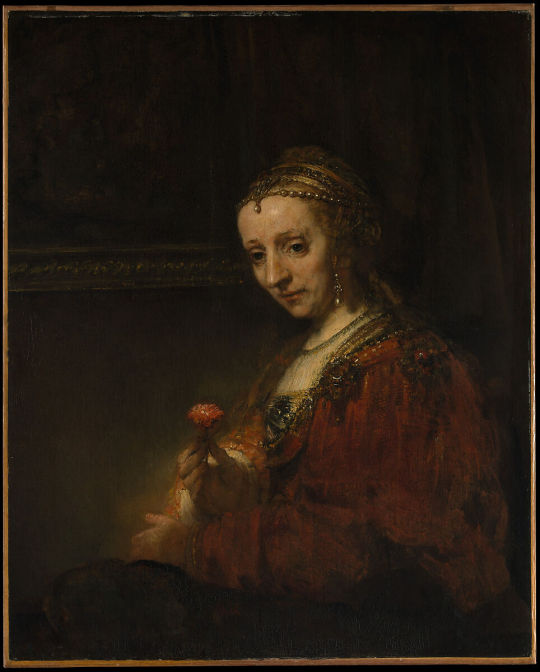
Woman with a Pink • 1630 • Metropolitan Museum of Art

Flora • 1634 • State Hermatage Museum, St. Petersburg Russia
Rembrandt painted his wife Saskia van Uylenburgh as Flora, goddess of spring and flowers, three times during their marriage.

Self-Portrait with Beret and Turned-Up Collar • 1659 • the Rijksmuseum, Amsterdam

Danaë • 1638 • The Hermitage, St. Petersburg, Russia
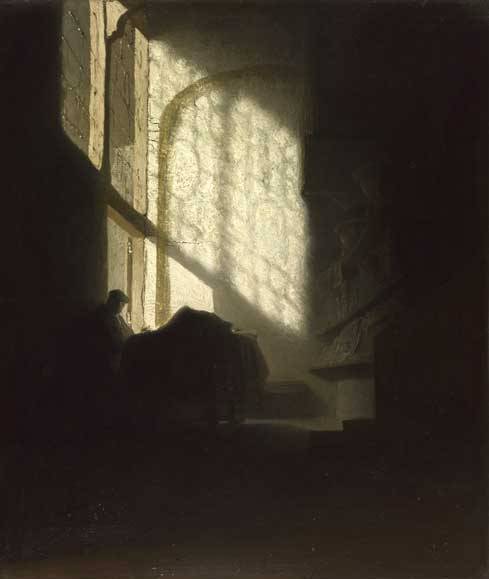
A Man in a Room • 1628-30 • National Gallery, London
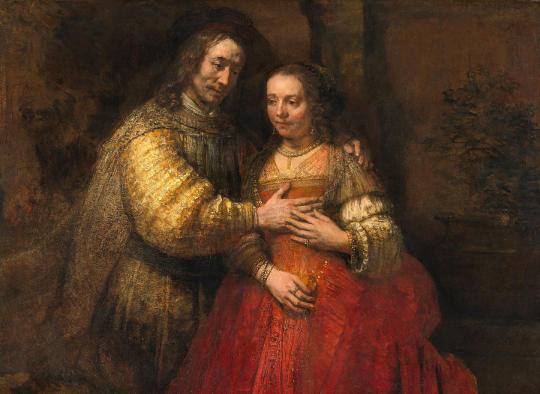
The Jewish Bride • c. 1680s • Rijksmuseum, Amsterdam, Netherlands

The Jewish Bride (detail)

Self-portrait with Gorget and Beret • 1639 • Indianapolis (Indiana), Museum of Art

Man in Oriental Costume • 1632 • Metropolitan Museum of Art
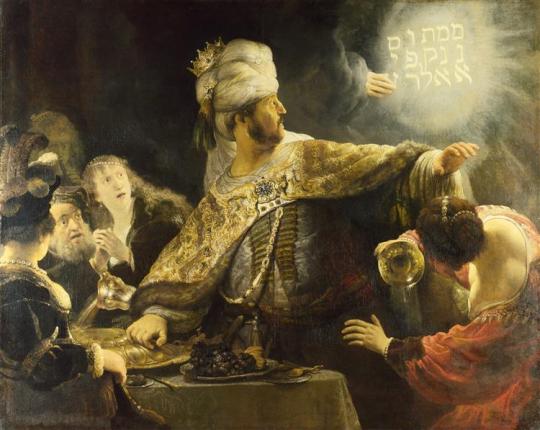
Belshazzar's Feast • 1636-38 • National Gallery, London
#baroque art#painting#art#fine art#art history#rembrandt#dutch golden age#hermitage#the metropolitan museum of art#national gallery london#self portrait#bannedonpinterest#art nude#mythological painting#rijksmuseum#biblical painting#religious painting
7 notes
·
View notes
Text
My portraiture photography inspired by Rembrandt
My photographs I would like to create in studio, were inspired by these 2 paintings.
Saskia with flower

Saskia with a Flower is a 1641 oil on canvas portrait by Rembrandt of his wife Saskia van Uylenburgh, now in the Gemäldegalerie Alte Meister in Dresden. It is also known as Saskia with a Red Flower, Saskia with a Carnation or Saskia as Flora.

Hendrickje Stoffels (1626 – 21 July 1663) was the long time partner of Rembrandt. The couple were unable to marry because of the financial settlement linked to the will of Rembrandt's deceased wife Saskia, but they remained together until Hendrickje's death. In 1654 she gave birth to Rembrandt's daughter Cornelia. In the later years of their relationship Hendrickje managed Rembrandt's business affairs together with the painter's son Titus.
Hendrickje is widely believed to have modelled for several of Rembrandt's works and to be depicted in some Tronie portraits. However, her role as Rembrandt's model is disputed by some critics.
Relationship with Rembrandt
Hendrickje obtained work as Rembrandt's housekeeper, and seems to have lived with him from approximately 1647, at first as a maid, but fast becoming much more. This led to an acrimonious fallout with Rembrandt's previous live-in lover Geertje Dircx, who sued Rembrandt for breach of promise in 1649, and demanded maintenance payments from him. Hendrickje testified in the case, confirming that a financial agreement had been reached with Geertje. In the same year Hendrickje returned to Bredevoort for the summer (possibly with Rembrandt accompanying her), and is there mentioned as a witness to a christening in the Bredevoorts church records. The Eighty Years' War was past, and peace was finally reaching even the eastern Netherlands.
In 1654, when she was pregnant with Rembrandt's daughter, Hendrickje had to appear before the Council of the Reformed Church for "living in sin" with Rembrandt, who was a widower and 20 years her senior. She admitted to "unwedded cohabitation" with Rembrandt and was banned from receiving communion. On 30 October 1654, the couple's daughter Cornelia van Rijn was baptized in the Oude Kerk in Amsterdam. Rembrandt and Hendrickje lived together as common law husband and wife until her death in 1663.
Initially, Rembrandt's unwillingness to marry Hendrickje had a pecuniary motive: by marrying her he would have forfeited the inheritance of his first wife Saskia van Uylenburgh. Even with this inheritance he had major financial problems, but without it he would have been bankrupt. But then in 1655, Titus – the son he had with Saskia – turned 14, and thereby eligible by law to make his will. Rembrandt immediately made sure that Titus installed him as his only heir and by that he outwitted Saskia. Still, he did not marry Hendrickje.
As Rembrandt's dealer
By 1656 Rembrandt was forced to declare bankruptcy. In 1658 he lost his house, and he, Hendrickje, Cornelia and Titus moved into rented property in the Jordaan. In the same year, Hendrickje, who got along well with Titus, opened an art shop with Titus’ help where she sold Rembrandt’s paintings. In order to protect him from his money lenders Hendrickje and Titus became his employers.[9] In this way his former maid Hendrickje Stoffels had become his boss – at least officially. Her biographer Christoph Driessen believes that Rembrandt’s noticeable productivity in the early 1660s was caused by the obvious support Hendrickje was rendering him. She was organizing his life for him and prevented his complete downfall after his bankruptcy.
In May 1663, the plague arrived in Amsterdam and killed thousands, especially at the end of the year. It is not clear Hendrickje was a victim of the epidemic as she was the only one who was buried in the Westerkerk in Amsterdam on 24 July 1663.
In Rembrandt's art
Hendrickje may have been a model for
Bathsheba at Her Bath (1654).
Though there are no paintings that are explicitly identified as depictions of Hendrickje, there are a number of portraits, nudes and other images which appear to depict the same woman, who is often assumed to be Hendrickje. A portrait in the National Gallery, London is identified as her "based on the knowledge of the sitter's relationship with the artist, and the informality and affection with which she is represented. She is seated wearing a fur wrap and jewellery. There are a number of other portrait-like images that appear to depict the same woman. However, Rembrandt scholar Eric Sluijter is sceptical of attempts to identify Hendrickje in Rembrandt's work, writing that,
If one compares the large number of etchings, drawings and paintings with the purpose of recognizing Hendrickje it appears more often than not that there is little mutual resemblance between all the candidates. It is surprising how, still, in recent art historical literature numerous works are identified as Hendrickje Stoffels as a matter of course.
Sluijter suggests that the broad similarity between the faces of women in Rembrandt's paintings suggest that he tended to portray an "ideal type".
Hendrickje is also traditionally identified as the model for a number of nudes, especially the painting Bathsheba at Her Bath. She would have been 28 at the time of the painting. Sluijter has proposed otherwise, stating that Rembrandt would be very unlikely to portray his partner's own recognisable face on nudes to be sold publicly.



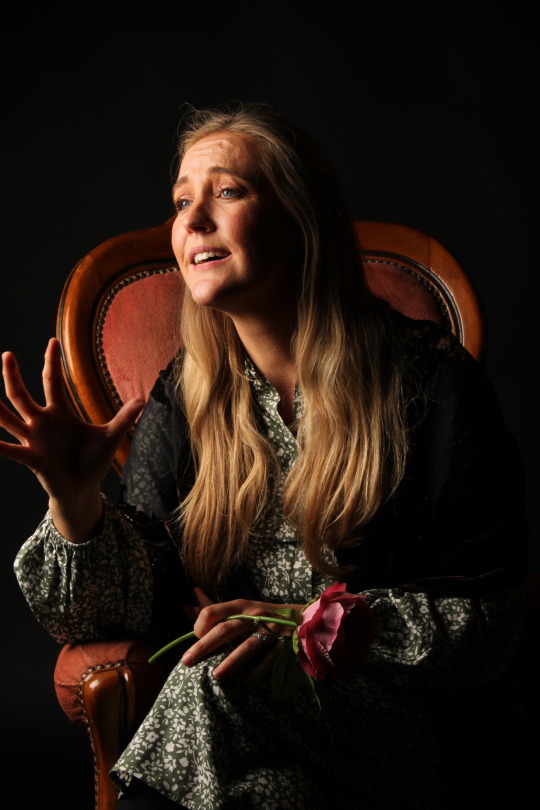


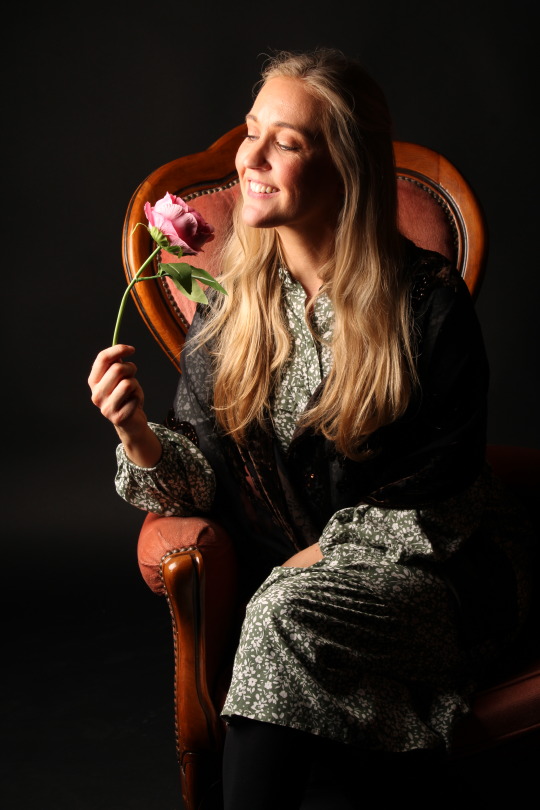
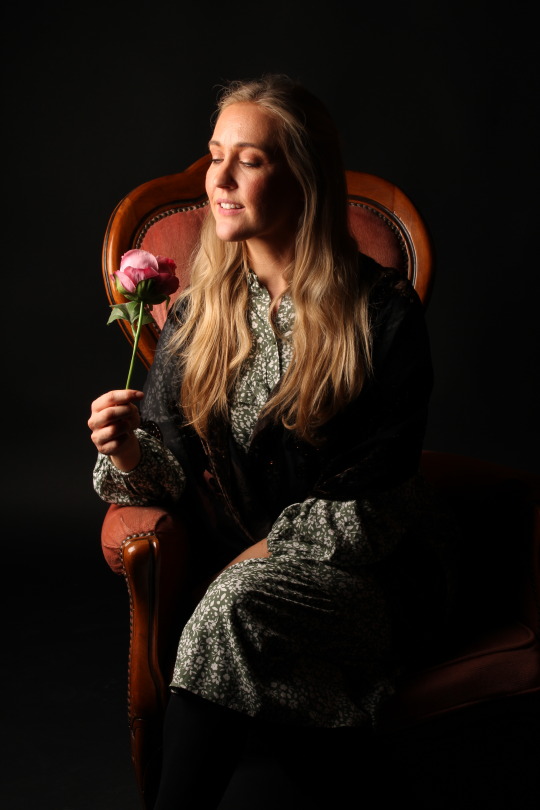
0 notes
Photo
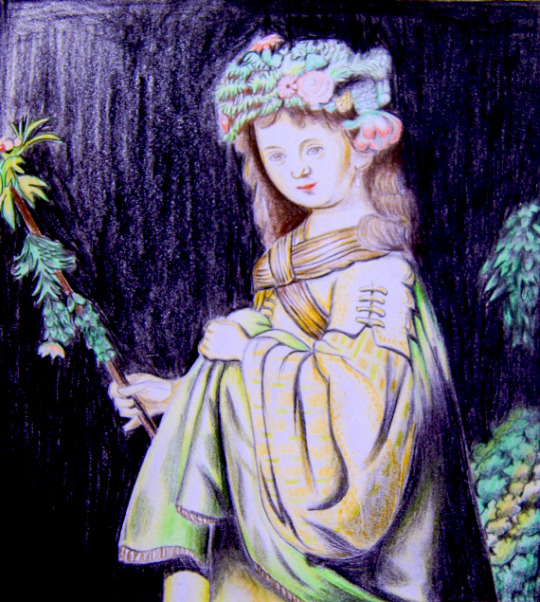
My favorite period for #paintings - #Baroque! <3 Why? Because it's filled with #women in #gowns and #flowers!
Here's my #colored #pencil #illustration of #Flora, original #oil #painting by #Rembrandt 1634
#children #dutch #goldenage #saskia #freelance #artist #art #illustrator
#baroque#period#paintings#women#gowns#flowers#colored pencil#pencil#illustration#flora#oil painting#rembrandt#children#dutch#golden age#saskia#freelance#artist#art#illustrator
2 notes
·
View notes
Text
I’m a little nervous but here is Part 1 of my very first Fexi smut.
They had danced around their feelings for six months almost seven. They went achingly slow. It took weeks for him to hold her hand. And Lexi initialed the first kiss.
When they couldn’t deny what was happening anymore they spent as much time together as they could.
The condensation trickled down the McDonalds cup and pooled in the bottom of Fez’s cup holder. They were sitting in his car spending a stolen hour or two of time in between Lexi’s last class and when he had to be back at the store.
Lexi said she wanted to get to know him on a basic level first. So, they started meeting up and whoever had a question first asked it. And it continued until it devolved into whatever amount of physical touch they felt comfortable with in public .
“So, what’s your favorite color?”
“Green. Whats your favorite flower?”
“Tulips. Variegated tulips.”
“Vari what?”
“Variegated. Some tulips are a monochromatic. But variegated ones have altered bulbs and when they bloom they have two blended colors. It’s really a beautiful pattern. Rembrandt painted some into portraits of his wife, Saskia. She was wealthy and he was poor when they married. She defied a lot of social conventions to marry him. It’s sweet if you think about it. But then, she died of tuberculosis before she was thirty. He ended up marrying again, having another lady locked up in asylum and died broke.”
“Shit.”
“Sorry, I talk too much.”
“Naw, that’s just got twisted in the end.”
She batted away thoughts of insecurity as she watched Fez dispose of their drinks and lift the center console.
He reached across the seat and intertwined their fingers. He wordlessly pulled her towards him.
At night at home in her bed, she would focus on these moments. His tongue gentle tracing her bottom lip asking for entrance into her mouth. The pressure of his hands as he guides her into his lap. The frantic breathes. Roaming hands. Occasional giggles when limbs have to be rearranged to accommodate the front seat of the car. Fez’s heartfelt insistence that they will only go as far as she is comfortable.
Sundays were spent lounging around Fez’s home. Ashtray made himself scarce and after, they made sure his grandmother was comfortable, the couch was were they landed. She has gone from shyly sitting beside him to draping her legs across him. His hand gripped her thigh in a subtle possessive manner.
She was always so surprised when he agreed to watch Jane Austen adaptations with her.
“Shit. That’s only fair. You watch all these gansta action flicks with me. Besides, that Darcy guy is a G. Family first and making sure his girl is right.”
Lexi slid over and straddled him after he said that. Fez let a little smirk show on his face. She kissed him and it only took a moment for him to lean into it.
“You like it when I talk literature or something ?”
She took his right earlobe in her mouth and gave it a gentle suck and nip before releasing it. She could feel her heart beat. All over her body. From the look in his eyes, he felt it to.
“I guess you do.”
His hand closed gently on her throat and he took her mouth with his. After their much too brief for her kiss, he pulled back.
“What do you want me to do?”
“Touch me “
She unzipped the hoodie she taken from him. She reached behind and unclasped her bra.
He gently rolled her on her back and positioned himself between her legs.
His hand cupped her breast and rubbed her nipple. The friction of his slightly rough thumb made her move reflexively underneath him. He replaced his thumb with his mouth. The suction made.her lose all concentration.
She was just thinking of how she could ask him to take off his pants so she could feel him skin to skin. Run her fingers along the firmness she could feel pressing against her thigh.
Her phone began buzzing insistently. Her mother
“Mom? Cassie? Cassie what?” She almost burst out laughing. Her mother sounded slightly panicked. All Lexie could think about was Fez kissing her stomach.
She ended the call and took a deep breathe.
“I need to go. I’m so sorry. Are you mad ?”
“Nah. We can pick this up another time.”
He dropped her off at home after a goodbye kiss she thought about all night afterwords.
The next time they saw each other she was so excited she could barely contain herself.
“Look at you. Beaming and shit. What’s up ?”
“I got my first college acceptance letter. I’m waiting to see what else comes along. But this one has some partial scholarships.”
“Word.”
He seemed excited for her but something changed after that day. He got distant and he cancelled on plans a few times. She was scared of what it meant. He backed off physical intimacy.
He had sat in the audience when she graduated and had some beautiful flowers sent to her house.
They played back and forth. Both of them acting like what was happening wasn’t.
It was three weeks from the time she had to leave for college. She decided no matter what happened she had to have closure. She showed up at his house.
“Fez, what is going on? Did I do something ? Are you mad because I’m leaving for college ? “
“Lex, no. I’ve just been thinking.” He pulled her into his arms. “ Maybe it’s best we cool off. College is a big deal. You don’t want to be stuck with a boyfriend back home. What if you meet some super genius that can keep up with you ?”
“That’s not a fair thing to say about yourself. And those college guys will not be any better than high school guys. If I believe Cassie and Maddie.”
He didn’t respond. Her ears starting ringing.
“Besides I thought. I kinda thought we loved each other.”
He looked down at his lap. She felt like she was looking through binoculars:
“So, you’re breaking up with me?”
“It’s for the best..”
“Ok.”
She fought for control of her body.
“Would you do something for me, Fez?”
“Anything. “
“We don’t have to talk ever again after tonight. But would you please be my first? Please.”
“I can’t do that.”
Suddenly, she was furious. Why was why trying so hard to make this easy ? For him? He was ripping her to shreds.
“Seriously? I’m offering you myself on a silver platter. No strings attached.. Unbelievable. Fuck this. You are so right, Fezco, you can’t keep with me. Physically, emotionally or mentally.”
She stormed out of his house.
51 notes
·
View notes
Photo
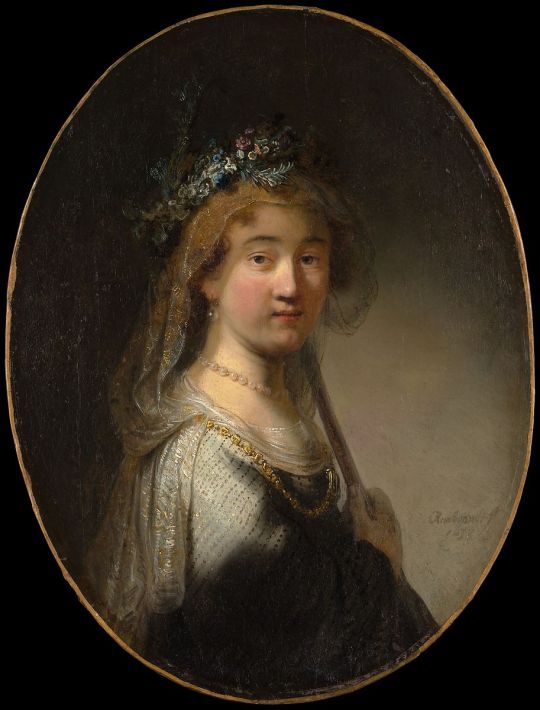
A Young Woman as a Shepherdess (late 1630s). Govert Flinck (Dutch, 1615-1660). Oil on canvas, transferred from wood. Met
The title employed by The Met for a century, Saskia as Flora, is doubly mistaken. Any resemblance to Rembrandt's wife derives from the influence on this work of paintings by Rembrandt that depict an idealized type somewhat reminiscent of Saskia. It is true that the figure here, crowned with a wreath of flowers, is similar to the goddess in Rembrandt's Flora of 1634, but her costume points to pastoral occupations of the kind practiced by ladies of the Dutch court. As noted by Louttit (1973), veils and striped silks, despite their look of opulence rather than rustic simplicity, were part of the pastoral mode in the 1630s. The genre flourished not only in painting and prints but also in the theatre, poetry, and other forms of literature.
13 notes
·
View notes
Photo
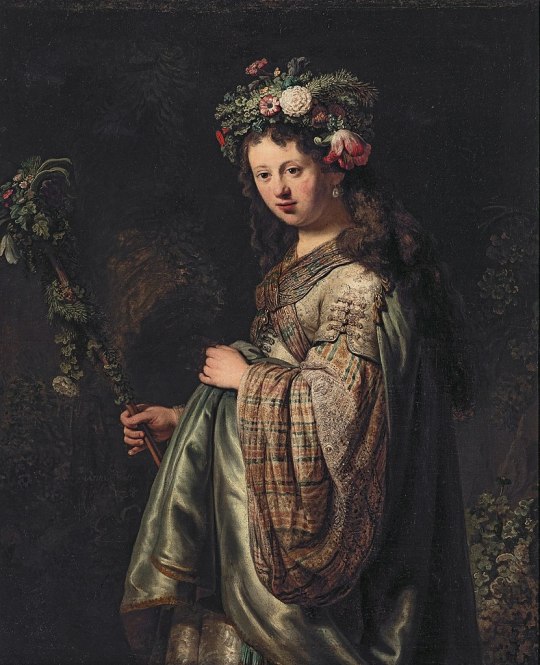
✨🌺✨✨🌺✨
Saskia van Uylenburgh (1612-1642) as Flora
Rembrandt 1606–1669
Oil on canvas, 1634
Hermitage Museum
The life-size quarter-length work was painted in Amsterdam, during a period when the young artist was experiencing early success. Rembrandt married Saskia in June 1634, and he made several paintings of her in the guise of characters from ancient myth, similar to his other character portraits (tronies). This work is thought to depict Saskia as Flora, Roman goddess of spring and flowers. She is standing in a grotto, looking towards the viewer, swathed in an extravagant and exotic costume of silk and satin with silver embroidery, with long hanging sleeves and a blue mantle, and wears a large pearl earring. She has a floral headdress over her long hair, including a multicolored "broken" tulip. She is also carrying a staff also decorated with leaves and flowers.
Rembrandt's paintings of Flora may have drawn some inspiration from the painting of Flora by Titian, then held in the collection of Alfonso Lopez, the Spanish ambassador in Amsterdam.
22 notes
·
View notes
Text
Some days I be feeling like Portia wounding her thigh (1664) Sirani but then I be looking like Saskia with a red flower (1641) Rembrandt.
0 notes
Photo

Flora
by Rembrandt van Rijn, circa 1650
-
For the educated person of Rembrandt’s day, a representation of a young woman wearing a wreath in her hair and holding flowers was the recognized personification of the goddess flora. The subject was a conventional and popular one, and in the first years after their marriage Rembrandt painted Saskia more than once in the guise of the goddess of springtime and flowers. Twenty years later, in this painting which may be assigned on the basis of style to the middle 1650′s, Rembrandt took up the subject once more, this time using Hendrickje’s features.
One is tempted to suspect that the subject was prescribed by a patron who commissioned the painting, not by Rembrandt himself. It certainly did not provide him with an opportunity to draw from the deepest wells of his imaginative resources. But he did exploit whatever the subject had to offer in the way of incentives for the craftsman. His accomplishment reaches its highest point in the treatment of the wide sleeves, which seem to rush to the wrists in cascades of hundreds of rivulets of white. As we look at them today, we can still sense the excitement which Rembrandt must have experienced as his eyes became fascinated by the play of the light on the soft, delicate material.
0 notes
Photo
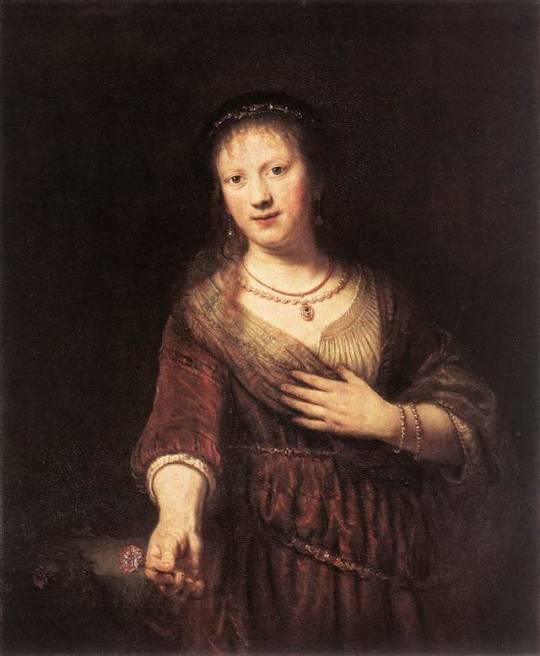
Saskia with a Red Flower, 1641, Rembrandt Van Rijn
Size: 98.5x82.5 cm
Medium: oil, canvas
12 notes
·
View notes
Photo

Dutch Masters paintings
#1 Flora by Rembrandt
Technical
Lighting
The painting has quite dark lighting to allow the colours of the flowers and robe to stand out.
Contextual
Rembrandt painted this in 1634 it is an oil on canvas painting and depicts his wife Saskia van Ulyenburgh as the goddess Flora it is currently held by the St. Peterburg Hermitage Museum. It was painted during a period in which the artist was gaining a lot of fame, he had married Saskia in June 1634 which he then proceeded to produce several paintings of her as ancient characters of myth.
Conceptual
The idea of the painting for Rembrandt as previously mentioned was to draw and paint his newly wed wife as various figures of myth, for this specific painting he chose the roman goddess Flora who is the goddess of flowers and the season of spring.
Visual
Colour the painting has a quite a lot of darker colours mixed with small hints of bright colours, the robe is a very dark overall with greens and browns with then contrasts with the reds and lighter greens of the flower crown.
Tone
Very balanced mix of bright and dark tones with the robe, staff and hair of the subject contrasting with the light skin and bright foliage crown she is wearing.
Texture
The background which resembles maybe a tree or a wall of rocks is very rough and although is in the background and darkened by quite a lot you can still make out all the small details on the rocks/bark.
Line
The staff acts as a leading line drawing the viewers eyes to the textured background.
0 notes
Text

Flora
Artist: Rembrandt van Rijn
Medium: Oil on canvas
Date: ca. 1654
Actual location: The met NYC
Flora was the Roman goddess of springtime and flowers, and she has often been a popular subject for artwork. Rembrandt painted several Floras; this was the last, and the only one that isn’t a recognizable portrait of a woman in Rembrandt’s life.
There may be hints of his late wife Saskia (1612–1642), but it’s far from a clear portrait. Flora’s face is turned away in profile, as though Rembrandt wanted to de-emphasize her identity.
Compared to Rembrandt’s previous Floras, all of whom were clearly based on Saskia, this one also stands out for other reasons.
The 1634 and 1635 Floras both have elaborate dresses, complex floral hair pieces, and floral staffs. They look like they’ve stepped out of an antique, pastoral fairytale world.
By contrast, this anonymous later Flora is timeless, even strangely modern. Her clothing is very simple—a plain white bodice and a yellow skirt with a belt tied around her waist. Her simple pearl necklace and earrings are nowhere as fancy as what the other Floras wore. She could be any woman from any era, even perhaps our own time. Only her fabulous, flower-encrusted hat references her identity as a goddess of springtime.
0 notes
Photo

Flora, 1634 by Rembrandt Baroque. Oil, canvas, 125 x 101 cm. Hermitage Museum, Saint Petersburg, Russia Rembrandt painted his wife Saskia van Uylenburgh as Flora, goddess of spring and flowers, three times: in 1634,1635 and 1641. In this work he combined elements of pastoral and historical portraits. Created in the year of their marriage, this painting shows the love and admiration the artist felt for the young woman. The contrast between the young sitter's diffident pose and the sumptuousness of her richly embroidered clothes and accessories gives the image a special charm. https://www.instagram.com/p/B3V_tUOnK9V/?igshid=1v50gcebdjd45
0 notes
Photo

New Post has been published on https://toldnews.com/travel/chasing-rembrandts-tulips-on-two-wheels/
Chasing Rembrandt’s Tulips on Two Wheels

While primarily a painter of people, the Dutch artist Rembrandt van Rijn immortalized at least one tulip. In 1634 he painted his wife, Saskia van Uylenburgh, as Flora, goddess of spring and flowers, crowned with a wreath of blooms, of which the largest is a tulip. Its petals are unmistakably striped, with white and red running in flame-like lines. Flowers like it became known as Rembrandt tulips, named by bulb traders in homage to his chiaroscuro painting style and to tap cachet from a famous name.
Saskia in her finery crowned with the most expensive type of tulip is in the Hermitage Museum in St. Petersburg. But tulipmania, which lifted the Dutch economy to dizzying heights followed by a cataclysmic crash, began in the Hortus botanicus, the botanical garden in Leiden, the city of Rembrandt’s birth. Tulips first arrived in the Netherlands in 1562. Mistaken for a Turkish onion, they were tasted, found underwhelming and dumped as rubbish, then rescued by someone who spotted flowers emerging from the rubbish heap in spring.
Today, flying into Amsterdam’s Schiphol airport in spring, you see a quilt of colors spread across the land; bulb fields in bloom. While the glimpse from a plane is fleeting, taking time to cycle around the fields provides a better view and immersion in the scent of millions of flowers. Leiden, which is marking the 350th anniversary of Rembrandt’s death, remains the center of this world of blooms. Both literally — because of the nearby flower fields — and intellectually, as a consortium of horticulturalists and scientists based in Leiden’s Bioscience Park decoded the tulip genome and are applying understanding its DNA to innovation in tulip breeding and production.
Leiden is a city that showcases its past. This year the Lakenhal Museum is bringing together an exhibition of Rembrandt’s early works, painted in Leiden. Leiden has the second biggest old town center in the Netherlands, where 17th-century merchant houses line the canals. Huys van Leyden is a 400-year-old house converted into a hotel. Its rooms are cozily opulent, and at the back, a small courtyard garden offers a secluded spot for fresh air. It is an ideal pit stop before heading off on a pedal-powered journey.
I rented a bicycle for €10 per day (about $11.30) from EasyFiets, a rental agency that offers the convenience of online advance booking. It is only a 15 minute walk from Leiden Centraal station. I asked for a bicycle with handbrakes instead of a back brake. I find the slow motion halt caused by the gap between wanting to brake and remembering the back brake induces more adrenaline than I need on a bike ride. EasyFiets also provided cycling maps for the bulb fields and panniers on request. My carry on luggage was easy to stuff into bicycle panniers.
Dutch bicycles are sturdy beasts, which take more effort to move than sylphlike road-bikes. When I mentioned that to my Dutch friend Hugo, he laughed and said, “Bicycles have to be heavy to resist falling over in wind.” Leiden has more bicycles than places to chain them, so they are often left propped on their foot stands exposed to winds rushing inland from the North Sea.
In a living ode to tulips and other spring flowering bulbs the Keukenhof garden, on the grounds of Keukenhof castle, which was built in 1641 by Adriaen Maertensz Block, an administrator for the Dutch East India Company, grows 7 million a year. Not just a show of new bulb varieties supplied by Dutch floriculturalists, the annual exhibition is an institution that shares innovation like ‘lasagna technique’ — planting bulbs in layers above each other to fit more flowers in the same space. Almost 1.5 million people visited the Keukenhof in 2018. It is certainly the place to start a spring flower odyssey.
Cycling northwest out of Leiden to Rijnsburg then northeast past Noordwijkerhout, then east to the Keukenhof was a scenic but indirect route. My time along the route’s flat paths and small roads was not determined by its distance. Rather, this journey’s length was dictated by how often I stopped to look at fields of flowers.
With a ticket booked in advance I didn’t need to queue to get into the Keukenhof. Despite visitors being deposited by coach loads, it is a garden with space for all who arrive. Although getting there when it opens at 8 a.m. will give you a moment of relatively unpopulated vistas of flowers. Blossoms, lawns and other bulbs are a foil to tulips. They are woven into streams of color under trees and fill flower beds in contrasting and complementary colors — there is space for all combinations to be tried.
It is gardening on a distorted scale where size is immense but time is short — the Keukenhof is only open for two flower-packed months from the 21st of March until the 19th of May.
Fields of beautiful industry
In contrast to arrays of flowers selected for visual appeal in the Keukenhof, bulb fields are industry that is incidentally beautiful. Catching fields of tulips in peak bloom is not an exact science; it tends to be the last two weeks of April. As bulbs are the desired product, flowers are not left in the field for long; they are cut to prevent energy being directed into seed setting.
For my ride to dinner I took a meandering route along flowery fields going from the Keukenhof to Kaag Lakes at the western edge of the ‘Bollenstreek,’ the bulb zone. I started out by trying to follow the Dutch system of navigating cycling paths by ‘knooppunten’ — numbered intersections or nodes. In theory, my route went 40-49-29-91-30-38-57-55-54-25, but in practice it included a couple of diversions down side roads next to flowery fields, through Lisse.
Rembrandt tulips did not feature in art or in dried botanical specimens before the end of the 16th century. In cultivation in Europe a virus had evolved. It suppresses primary pigment made in petals, leaving areas where the white or yellow underlying color shows. It also weakens the plants and is highly infectious.
In 1624 one tulip bulb sold for 8 times a worker’s annual salary. Prices spiraled upward for more than a decade as people speculated on flowers that might emerge from tulip bulbs. Akin to having a phoenix hatch from a chicken egg, a Rembrandt tulip, with its streaked petals, was an ephemeral capricious beauty; they were short lived and people were not sure what caused them to be different from standard blooms.
Today, virus-tainted tulips are never deliberately planted in bulb fields because they are considered a liability. Striped petals in tulips sold today have stripes caused by genetic variation, not by tulip breaking virus.
Cycling small roads that run alongside bulb-filled fields makes it easy to stop on a whim for a closer look. I never spotted a rogue virus-caused Rembrandt tulip in a bulb field, though very rarely they are sighted and promptly removed so that they don’t damage the bulb crop with their infection. In gaps showing between leaves the soil is pale, it flows through your fingers like sand. These fields are only a step away from the sea. Occasionally you can see tiny shells left in the soil from a previous era when it lay underwater. This soil is a connection between the original wild tulips of Central Asia and the immense agricultural production of bulbs in the Netherlands. Free-draining soil suits plants with fleshy bulbs like tulips as they can store water and nutrients to survive seasons of relative drought, but fail to thrive in sodden ground.
At Kaag lakes I took a ferry 40 meters from Buitenkaag to Kagereiland, an island, landing me and my bicycle nearly on the doorstep of Tante Kee restaurant. As the restaurant was not full on a weekday evening I scored a lake view seat without having made a booking. Early evening sunset spilling over my table made a serving of mussels, langoustines and vegetables scaled by pea tendrils look like a still life by a Dutch Master. A sheet of annotated paper between cheese and platter made the cheese course resemble a whisky tasting.
Since the 12th century people have been draining submerged land and converting it to agriculture in the Netherlands. Windmills were used to pump water into drainage channels to reach rivers and the sea. Now pumps are run by diesel, not wind, but the polder landscape of small rectangles of land surrounded by drainage channels remains. I took the ferry off the island back to Buitenkaag. Cycling to Leiderdorp, a village at the edge of Leiden, I skirted Kaag lakes by heading east then south then west through the polders, following nodes 8-9-28-40-86-49-48-38-41. Hares dotted the grass. Later I found a postcard of a hare leaping across a drainage channel and sent it to my niece. At the Lindenhof bed-and-breakfast, on the outskirts of Leiderdorp, one bedroom has a skylight under a tree. When you open the window and reach out to touch the leaves it is like being perched in a treetop.
The science of tulips
Carolus Clusius, a physician and botanist who was a professor of botany at University of Leiden, established Leiden’s Hortus botanicus, its famous botanical garden, and it is where he planted and propagated his collection of tulips from Constantinople. Clusius first wrote about tulips in his book on “most strange and elegant plants from Thrace.”
As you walk into the Hortus botanicus a tabby cat is often sprawled in a pot basking in the sun. I frequently visit this garden. Like Clusius I am a botanist, but I focus on trade in plants collected from the wild. My research on edible orchids is based in the Naturalis Biodiversity Center, an institution that holds natural history collections, runs research laboratories and education programs, and has a natural-history museum that is reopening this year in its new building.
Some of my experimental samples of orchids are grown at the Hortus. Not in the tropical lushness of the main glasshouse, but outdoors in unheated frames. When flowering they join bulbs in the specially constructed display glasshouse. Its glass walls and roof allow in plenty of light while keeping out dampness from mists and rain, creating a climate more akin to tulips’ and orchids’ native lands. It also makes it more difficult for people to steal them. Clusius planted his tulips in 1593, in 1596 and 1598 some of them were taken. Those stolen bulbs were the beginning of both short-lived tulipmania, and the long-lasting bulb trade that now sees about 2 billion tulip bulbs grown each year in the Netherlands.
We think of tulips as ornamental but within living memory they were famine food. In the Hunger Winter of 1944-1945, more than 20,000 people died of starvation. Rations distributed by the Dutch government had to incorporate unconventional foods. In the Dutch Resistance Museum in Amsterdam there is a recipe for tulip soup and a photo of women with sacks of tulips, peeling them for a soup kitchen.
Leiden is a leafy city, but sometimes I crave a little more wilderness. After checking my plants at the Hortus I headed out to the dunes at the edge of the North Sea. Most of the cyclists I met were on upright bicycles and treated helmets as superfluous on the car-free bicycle paths. But on the pavement through the Klein Berkheide nature reserve, the closest patch of untamed nature near Leiden, a gang of Lycra-clad and helmeted sports cyclists whizzed past making use of hills and valleys in the dunes all the way along the coast from Katwijk an Zee to Den Hague. It is a contrast to most cycling in the area which is flat.
When the sun is shining a picnic between grass-tufted dunes by Katwijk an Zee is a glorious way to catch a sunset and watch paragliders. De Fransoos in Leiden is good for picking up sandwiches and cheese. On overcast days when the idea of sitting in the winds with cold food seems chilly, you can stop at Kees Hartevelt on the boulevard at Katwijk an Zee for fried fish.
As flowers cultivated in the bulb fields start to pass peak flowering, wildflowers in the dunes begin to bloom in abundance. Sprawling rugosa roses, from Japan, have moved in and create heaps of bold pink flowers by the path. Viper’s-bugloss punctuates them with blue spikes.
This area was the only place I was stopped by a bicycle traffic jam. Rounding a corner I felt annoyed to see the path blocked by people and cyclists, until I saw what they were looking at. Sitting by a bench next to an old man offering morsels of his sandwich was a fox. After a few minutes of sharing the man’s snack, the fox strolled away, quickly blending into the dunes.
One night after a late dinner with friends in Leiden I reached the Fletcher Boutique Hotel Duinoord at the edge of Klein Berkheide just after the front door was locked. Opening the door and greeting me by name, the receptionist gave me an envelope he was about to stick on the door before he went home. It had my name on it and room key inside. The hotel is cradled within the dunes, and once hotel restaurant and bar are shut, there is nothing but the sound of nature. In springtime when tulips are at peak flowering, nights here are dominated by chattering natterjack toads. A densely populated and extensively farmed land is transformed into the aural equivalent of a remote rain forest by singing amphibians.
Susanne Masters is a botanist who writes about plants as well as conducting research on their uses and conservation.
Follow NY Times Travel on Twitter, Instagram and Facebook. Get weekly updates from our Travel Dispatch newsletter, with tips on traveling smarter, destination coverage and photos from all over the world.
#m1 travel news southbound#radio 2 travel news today#the news travel fast#travel news a 74#travel news a6#travel news bradford#travel news europe#travel news m4/5#travel news on m6#travel news yorkshire and humberside
0 notes
Photo

Saskia with a Red Flower, 1641, Rembrandt Van Rijn
Size: 98.5x82.5 cm
Medium: oil, canvas
6 notes
·
View notes
Photo

Saskia with a Red Flower, 1641, Rembrandt Van Rijn
Size: 98.5x82.5 cm
Medium: oil, canvas
10 notes
·
View notes